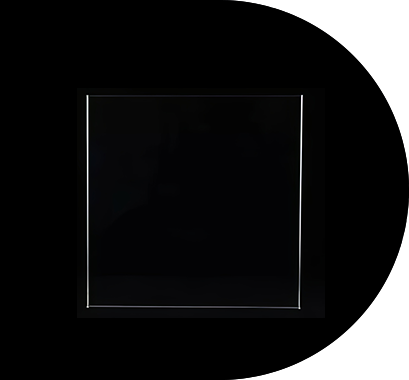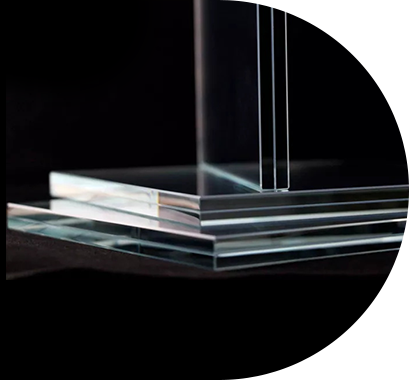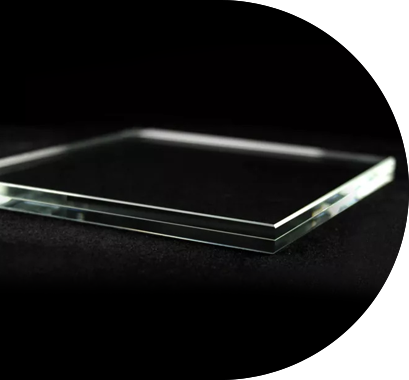In the hallowed halls of museums, a silent revolution unfolds—not in the art itself, but in the very substance separating viewer from artifact: display case glass. Far more than passive windows, these engineered barriers merge optical clarity with cutting-edge conservation science, redefining how humanity encounters its cultural legacy.
Content
The Evolution: From Windowpanes to Nanotech Guardians
Early museums used standard window glass—flawed, reflective, and chemically unstable. Today’s solutions are feats of material science:
| Era | Glass Type | Limitations | Modern Counterpart |
|---|---|---|---|
| 19th Century | Annealed Soda-Lime | Green tint, reflections, UV damage | Ultra-Clear Low-Iron Glass |
| Early 20th C. | Tempered Glass | Distortion, poor UV blocking | Laminated Anti-Reflective (AR) |
| Late 20th C. | Tinted "Museum" | Color shift, reduced light transmission | Multi-Coated Nanotech AR |
Core Technologies Protecting Treasures
-
Ultra-Low Iron Composition
-
Removes green/blue iron oxide tint → 99%+ light transmission.
-
Ensures true color fidelity for pigments, textiles, and manuscripts.
-
-
Anti-Reflective (AR) Nanocoatings
-
Multi-layer metallic oxides (e.g., SiO₂, TiO₂) applied via magnetron sputtering.
-
Reduces reflections to <1% (vs. 8% for uncoated glass).
-
Eliminates "ghost panes" obstructing sightlines.
-
-
UV/IR-Blocking Interlayers
-
Laminated ethylene-vinyl acetate (EVA) or PVB with UV absorbers.
-
Blocks >99% UV rays (fading textiles/pigments) and >70% IR (heat).
-
-
Security Lamination
-
2-3 glass plies + polymer interlayer → shatter-resistant barrier.
-
Delays forced entry by 10+ minutes (tested to EN356 P8A standards).
-
The Conservation Imperative: Beyond Clarity
-
Relative Humidity (RH) Control: Hermetic seals maintain stable microclimates (e.g., 50% RH ±2%).
-
Gas Diffusion Barriers: Low-permeability glass limits oxygen ingress, slowing oxidation of metals.
-
Anti-Static Properties: Prevents dust adhesion to surfaces near sensitive electronics or fabrics.
Case Study: The British Museum
After upgrading to AR laminated glass for its Assyrian reliefs:
Visitor dwell time increased by 40% (reduced glare).
Light exposure dropped 82% without dimming aesthetics.

The Viewer Experience: Crafting Intimacy
Advanced glass dissolves the physical divide:
-
Color Rendering Index (CRI): Maintains CRI >98 (sunlight = 100), preserving Vermeer’s blues or Turner’s golds.
-
Angular Neutrality: View artifacts obliquely without distortion—critical for sculptural pieces.
-
Haptic Illusion: 0.2mm glass-painting gaps create a "floating" effect, enhancing emotional connection.
Future Frontiers: Smart Glass & Beyond
-
Electrochromic Integration: Glass darkens automatically when galleries close (zero light exposure).
-
Embedded Sensors: Micro-scale RH/temperature trackers alert conservators to seal breaches.
-
Self-Cleaning Surfaces: TiO₂ photocatalysts break down organic dust under UV-free LEDs.
Selecting Museum Glass: Key Criteria
| Parameter | Ideal Specification | Impact |
|---|---|---|
| Light Transmission | ≥ 97% | Maximizes vibrancy, reduces lamp power |
| Reflectance | ≤ 0.5% (each surface) | Eliminates visual interference |
| UV Blocking | 99.9% @ 380nm | Prevents photochemical degradation |
| Lamination Strength | >15 MPa (post-aging) | Ensures decades of structural integrity |
Conclusion: The Unseen Curator
Museum display glass has transcended its role as mere barrier. It is now an active participant in preservation—a nanoscale-engineered shield balancing human access with material vulnerability. In its transparency lies a profound statement: the greatest technology doesn’t shout; it disappears, leaving only the art to speak across centuries.
For conservators, it’s a climate-controlled fortress.
For visitors, it’s an invisible portal.
For history, it’s time made tangible.






